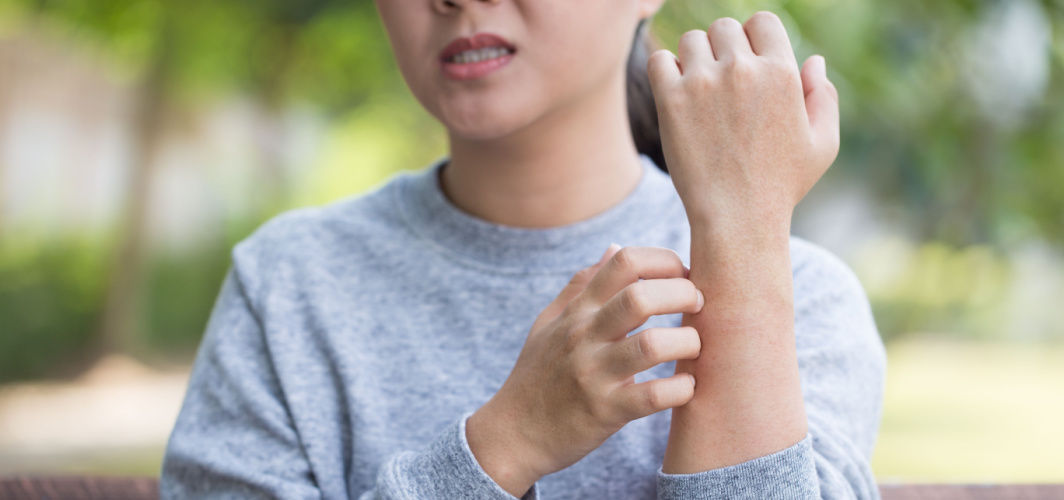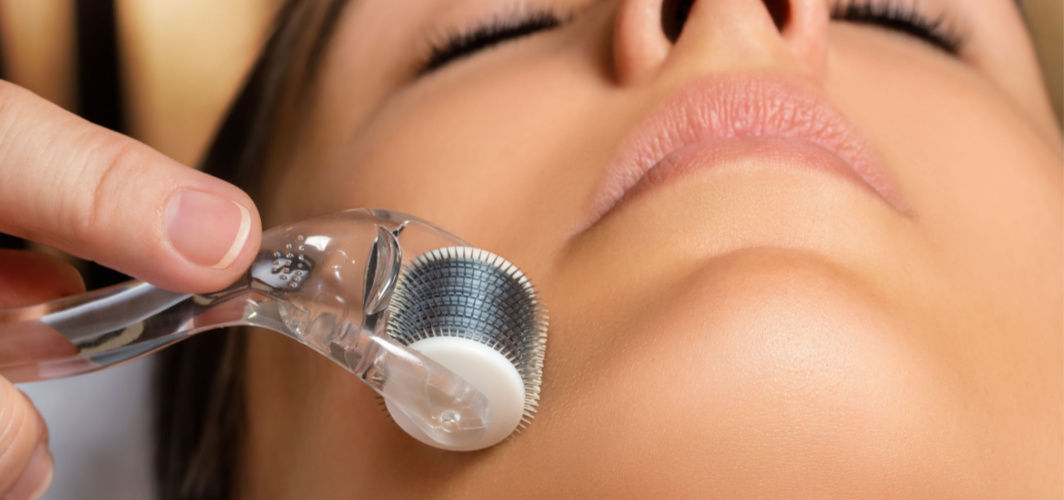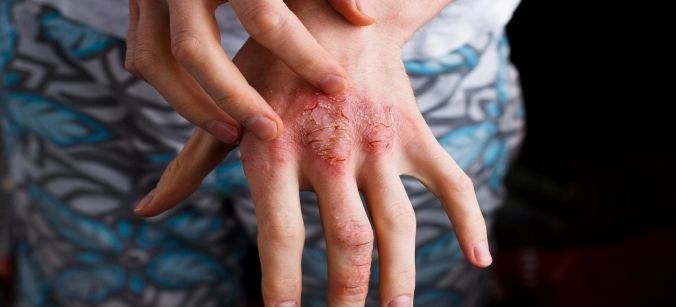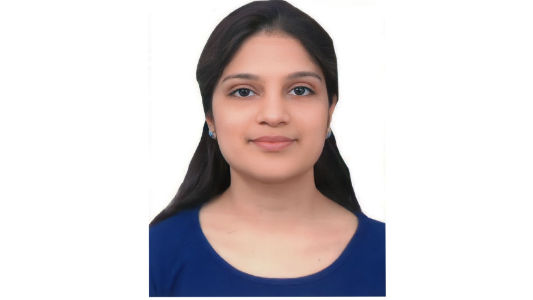Skin Care
Winter Skin Diseases: Rash Causes, Treatment & Prevention
8 min read
By Apollo 24|7, Published on - 16 July 2023, Updated on - 17 July 2023
Share this article
0
0 like

Winter skin diseases are a common concern during the colder months, impacting one's well-being. In India, regions with colder climates experience a higher occurrence of winter skin diseases, particularly in children, the elderly and individuals with pre-existing skin conditions.
The harsh weather conditions, low humidity levels and frequent temperature changes can seriously damage our skin. The cold and dry weather of winter can result in dryness, itchiness and irritation, leading to the development of rashes and other skin problems. Understanding the causes behind these issues is crucial, as it allows us to effectively prevent and treat winter rashes. Let's explore effective measures to safeguard our skin during this season.
Why Are Rashes So Common in Winters?
There are several factors contributing to the increased occurrence of rashes during winter:
- Low Humidity: Cold weather leads to a decrease in humidity levels, causing the skin to dry out more quickly.
- Dry Skin: Cold weather and low humidity cause the skin to lose moisture, leading to dryness, irritation, itching and rashes.
- Hot Showers: Taking long, hot showers can strip the skin of its natural oils, further exacerbating dryness and increasing the risk of rashes.
- Indoor Heating: Artificial indoor heating systems can further deplete the moisture levels in the air, drying out your skin even more.
- Heavy Clothing: Wearing thick clothing can create friction against the skin, causing irritation and rashes.
Common Winter Skin Diseases
Eczema
Eczema, also known as atopic dermatitis, is a common skin condition that can worsen during the winter months. The dry and cold weather can cause the skin to become more sensitive and prone to flare-ups. Here are some key points to know about eczema in winter:
1. Causes and Triggers:
- Low humidity
- Hot showers
- Woollen clothing and certain fabrics like synthetic materials
2. Symptoms and Characteristics:
- Red, itchy and inflamed skin
- The rash may be more prominent on the hands, face and legs
- Dryness, scaling and cracked skin
3. Treatment Options:
- Topical corticosteroids, moisturisers and antihistamines to relieve itching.
- Systemic medications or personalised treatment plans may be given by dermatologists for severe cases.
4. Prevention Measures:
- Keep the skin well-moisturised using fragrance-free creams or ointments.
- Avoid hot showers or baths and opt for lukewarm water instead.
- Wear soft cotton clothing. You may layer it with woollen clothes on top.
- Using a humidifier at home to maintain moisture levels in the air.
Psoriasis
Psoriasis is a chronic skin condition that affects many people, especially during the winter season. It is characterised by red, itchy and scaly patches on the skin. Some key points to know about psoriasis during winter are:
1. Winter-related Triggers of Psoriasis:
- Cold and dry weather
- Indoor heating systems that reduce humidity levels
- Frequent hot showers or baths
- Stress and lack of sunlight
2. Identifying Psoriasis Symptoms and Types of Rashes:
- Red, inflamed patches of skin with silvery scales.
- Itching, burning or soreness.
- Common types of psoriasis are plaque psoriasis, guttate psoriasis and pustular psoriasis.
3. Medical Treatments for Psoriasis During Winter:
- Topical corticosteroids and moisturisers.
- Phototherapy (light therapy) to increase vitamin D production.
- Systemic medications for severe cases.
4. Self-care Tips and Lifestyle Changes to Manage Psoriasis:
- Keep skin moisturised with thick creams or ointments.
- Avoid hot water and opt for lukewarm baths.
- Use a humidifier to add moisture to indoor air.
- Practice stress management techniques like yoga or mindfulness.
Of note: To effectively manage eczema and psoriasis during winter, you should combine medical treatments, lifestyle adjustments, symptom identification and self-care practices.
Other Winter Skin Diseases and Rashes
While winter rash is a common skin issue during the colder months, there are other winter skin diseases and rashes that individuals should be aware of to protect their skin. Here are some additional conditions to watch out for:
Frostbite
Frostbite occurs when the skin and underlying tissues freeze due to extreme cold. Here are some key points to know about frostbite:
1. Understanding frostbite and its stages
Frostbite can cause damage to the skin and lead to complications if not treated promptly. Frostbite has different stages: frostnip (mild), superficial frostbite (moderate) and deep frostbite (severe).
2. Recognising Symptoms and Signs of Frostbite Rash
The initial symptoms of frostbite include numbness, tingling and discolouration of the affected area. As the condition progresses, blisters, pain and swelling may occur.
3. Immediate First-aid Measures for Frostbite Treatment
If you suspect frostbite, it's crucial to get out of the cold immediately. Rewarm the area with warm water or by placing a warm cloth against the skin. Avoid rubbing or massaging the affected area.
4. Seeking Medical Attention
Severe frostbite requires medical attention. Treatment may include wound care, pain management and even surgery in some cases.
Chilblains
Chilblains are small, itchy red patches or bumps that occur due to poor circulation in cold weather. Here's what you need to know:
1. Causes and Risk Factors of Chilblains in Winter
Chilblains are small, itchy bumps that appear on the skin when exposed to cold but not freezing temperatures. They are caused by abnormal blood vessel responses to cold temperatures.
2. Identifying Chilblain Rash Symptoms
Chilblains often affect the fingers, toes, ears and nose. They appear as red or purple bumps on the skin, accompanied by itching and swelling.
3. Home Remedies for Chilblains
To alleviate chilblains, keep the affected areas warm by wearing warm clothing and using heating pads or warm water soaks. Avoid scratching the itchy bumps to prevent infection.
4. When to Consult a Doctor for Chilblains
Seek medical attention if the chilblains worsen, become infected, or if you have underlying health conditions like diabetes as they may complicate the condition.
General Tips for Winter Rash Prevention and Care
1. Hydration and Nutrition
Proper hydration is essential for maintaining healthy skin during winter. Ensure you drink enough water throughout the day to keep your skin hydrated from within. Additionally, include foods and beverages in your diet that promote healthy skin.
- Importance of Proper Hydration During Winter: Proper hydration is essential during winter to keep the skin moisturised and prevent dryness.
- Foods and Beverages that Promote Healthy Skin: Include foods rich in omega-3 fatty acids, such as fatty fish, nuts and seeds, to promote healthy skin.
- Dietary Considerations for Skin Health: Consume fruits and vegetables high in antioxidants, like berries and leafy greens, to protect the skin from oxidative damage. Stay away from excessive caffeine and alcohol as they can dehydrate your skin.
2. Skincare Routine
Having a suitable skincare routine is crucial for protecting your skin during winter.
- Best Practices for Winter Skincare: Follow a gentle skincare routine that includes cleansing, toning and moisturising.
- Choosing Suitable Skincare Products for Winter: Use a mild cleanser that doesn't strip away natural oils. Opt for moisturisers with ingredients like hyaluronic acid or ceramides to lock in moisture.
- Protecting the Skin from Harsh Weather Conditions: Choose suitable skincare products for winter that are specifically formulated to provide extra hydration and nourishment to the skin.
3. Clothing and Accessories
Dressing appropriately for winter weather is vital in preventing winter rash.
- Dressing Appropriately for Winter Weather: Dress in layers to protect the skin from extreme cold and wind.
- Fabrics and Materials that are Skin-friendly During Winter: Choose breathable fabrics like cotton or wool to prevent irritation.
- Usage of Accessory Clothing: Wear gloves, scarves and hats to cover exposed areas and retain heat.
4. Lifestyle Factors
Your lifestyle choices can greatly impact your skin's health during winter.
- Manage stress through activities like meditation or yoga, as stress can worsen skin conditions.
- Avoid hot showers or baths as they can strip the skin of its natural oils.
- Stay physically active to improve blood circulation and promote overall skin health.
Conclusion
Winter skin diseases and winter rashes can be quite common during the colder months. It is important to understand the causes and symptoms of these conditions to seek appropriate treatment and avoid any complications. Remember, maintaining healthy skin during winter requires a combination of a proper skincare routine and lifestyle changes. If you have more questions, talk to the specialists.
FAQs
Q. Can winter skin diseases be contagious?
No, most winter skin diseases are not contagious. They are caused by external factors rather than pathogens.
Q. When should I see a doctor for my winter rash?
If your symptoms worsen or persist despite home remedies, it is advisable to consult a dermatologist for proper evaluation and treatment.
Q. Can I get sunburned in winter?
Yes, it is possible to get sunburned in winter, especially at high altitudes or near reflective surfaces like snow. It's important to apply sunscreen on exposed areas when spending time outdoors.
Q. Can certain foods help improve winter skin conditions?
A balanced diet rich in fruits, vegetables and healthy fats can support overall skin health. Foods high in antioxidants and omega-3 fatty acids may help reduce inflammation.
Q. Is psoriasis more common in winter?
Yes, psoriasis tends to worsen in colder weather due to the dry air and lack of sunlight.
Medically reviewed by Dr Sonia Bhatt.
Skin Care
Consult Top Dermatologists
View AllLeave Comment
Recommended for you

Skin Care
Is Your Derma Roller Really Effective?
A derma roller is a handheld skin care device that contains multiple rows of tiny needles. The article explores its uses and benefits in detail below.

Skin Care
Eczema Diet: What to Eat & What to Avoid?
Eczema predominantly roots itself in genetics and may occasionally flare up due to immune system activation to specific allergens including inflammatory food, cosmetics, fabric and stress. This article highlights the top 5 best and worst food items to include and eliminate from your diet.

Skin Care
Scientifically-Proven Ways To Deal With Dandruff
With some uncomfortable and embarrassing symptoms, dandruff can be developed due to several factors. In addition to using over-the-counter dandruff shampoos, there are several at-home remedies you can use to get rid of them.
Subscribe
Sign up for our free Health Library Daily Newsletter
Get doctor-approved health tips, news, and more.
Recommended for you

Skin Care
Is Your Derma Roller Really Effective?
A derma roller is a handheld skin care device that contains multiple rows of tiny needles. The article explores its uses and benefits in detail below.

Skin Care
Eczema Diet: What to Eat & What to Avoid?
Eczema predominantly roots itself in genetics and may occasionally flare up due to immune system activation to specific allergens including inflammatory food, cosmetics, fabric and stress. This article highlights the top 5 best and worst food items to include and eliminate from your diet.

Skin Care
Scientifically-Proven Ways To Deal With Dandruff
With some uncomfortable and embarrassing symptoms, dandruff can be developed due to several factors. In addition to using over-the-counter dandruff shampoos, there are several at-home remedies you can use to get rid of them.


